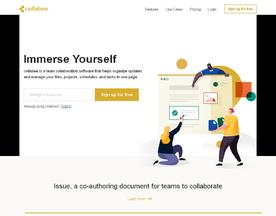What are ice breaker games for meetings? Ice breaker games are fun activities to warm up meetings, boost team spirit, and foster connections.
Ice breaker games for meetings have become a popular way to kick off team-building events. These games are designed to help people feel more comfortable and connected with one another, which can lead to better communication and collaboration. When done well, ice breaker games for meetings can be a fun and effective way to break down barriers and build stronger relationships within a team.

One of the main benefits of ice breaker games for meetings is that they can help to create a more positive and engaging atmosphere. When people feel comfortable and relaxed, they are more likely to participate and contribute to the conversation. This can be especially important in meetings where people may feel nervous or uncomfortable speaking up. By using ice breaker games for meetings, team leaders can help to set a tone of openness and collaboration that encourages everyone to get involved.
Key Takeaways
- Ice breaker games for meetings can help to create a more positive and engaging atmosphere in meetings and team-building events.
- There are many different types of ice breaker games that can be used to suit different settings and team dynamics.
- When implementing ice breaker games for meetings, it is important to consider the needs and preferences of the team, and to assess the impact of the games on team dynamics and communication.
Benefits of Ice Breaker Games for Meetings
Ice breaker games for meetings have become an essential part of meetings and team-building activities. They are designed to help employees relax, interact and engage with one another in a fun and light-hearted way. In this section, we will explore some of the benefits of ice breaker games for meetings and in the workplace.
Enhancing Team Bonding
Ice breaker games for meetings can be an effective way to enhance team bonding. When employees participate in these games, they get to know each other better, which can lead to a stronger sense of camaraderie and teamwork. As a result, team members are more likely to work collaboratively, share ideas, and support each other to achieve common goals.
Promoting Open Communication
Effective communication is essential for any team to function effectively. Ice breaker games for meetings can help to promote open communication among team members. By participating in these games, employees learn to listen actively, express themselves clearly, and articulate their thoughts and ideas. This can lead to better communication and understanding within the team, which can ultimately improve productivity and efficiency.
Building Trust and Psychological Safety
Trust and psychological safety are crucial components of a healthy workplace culture. Ice breaker games for meetings can help to build trust and create a safe environment for employees to share their thoughts and ideas without fear of judgment or criticism. When employees feel safe and supported, they are more likely to take risks, be creative, and contribute to the team’s success.
Including ice breaker games for meetings and in team-building activities can have a positive impact on team bonding, communication, trust, and psychological safety. By using these games, companies can create a more engaged and productive workforce. For more information on ice breaker games, check out this resource from MindTools.
Types of Ice Breaker Games for Meetings
Ice breaker games for meetings are designed to help teams get to know each other better, build trust, and create a positive and comfortable environment. There are various types of ice breaker games that can be used for small groups, large teams, and remote or virtual teams. In this section, we will discuss some of the most popular types of ice breaker games.
Games for Small Groups
Small group ice breaker games for meetings are ideal for teams with fewer members. These games are designed to encourage team members to interact with each other and get to know each other better. Some popular games for small groups include:
- Two Truths and a Lie: In this game, each team member shares three statements about themselves, two of which are true and one which is a lie. The other team members have to guess which statement is the lie.
- Human Knot: In this game, team members stand in a circle and hold hands with two different people across the circle. The team has to untangle themselves without letting go of each other’s hands.
- The Great Egg Drop: In this game, teams are given a raw egg and a limited set of materials to build a structure that will protect the egg when dropped from a certain height.
Games for Large Teams
Large team ice breaker games for meetings are designed to help teams with a larger number of members to interact with each other. These games are often more structured and require more planning. Some popular games for large teams include:
- Scavenger Hunt: In this game, teams are given a list of items to find or tasks to complete within a certain time limit. The team that completes the most items or tasks wins.
- The Marshmallow Challenge: In this game, teams are given a limited set of materials and a time limit to build the tallest tower possible using only spaghetti, tape, and string.
- Blind Drawing: In this game, team members are paired up and one person is given a picture to describe to their partner, who has to draw the picture without seeing it. The team with the most accurate drawing wins.
Virtual Ice Breaker Games
Virtual ice breaker games for meetings are designed to help remote or virtual teams get to know each other better and create a positive and comfortable environment. These games are often adapted from traditional ice breaker games to work in a virtual environment. Some popular virtual ice breaker games include:
- Never Have I Ever: In this game, team members take turns saying something they have never done before. The other team members who have done that thing have to take a drink or do a certain action.
- Virtual Scavenger Hunt: In this game, teams are given a list of items to find within their own homes or on the internet. The team that completes the most items within a certain time limit wins.
- Emoji Storytelling: In this game, team members take turns telling a story using only emojis. The other team members have to guess what the story is about.
For more ideas on ice breaker games for meetings, check out this article by TinyPulse.
Ice Breaker Games for Different Settings
Ice breaker games for meetings can be a great way to start any meeting, whether it’s in-person, virtual, or a hybrid team meeting. Here are some ice breaker game ideas for different settings that can help break the ice and bring people together.
In-Person Meetings
In-person meetings offer the opportunity for more interactive and physical ice breaker games. Here are some ideas:
- Two Truths and a Lie: Each person shares three statements about themselves, two of which are true and one is a lie. The group then has to guess which statement is the lie.
- Human Knot: The group stands in a circle and everyone randomly grabs someone else’s hand. The group then has to untangle themselves without letting go of each other’s hands.
- Name Game: Everyone says their name and something that starts with the same letter as their name (e.g. “My name is Sarah and I like sushi”).
Virtual Meetings
Virtual meetings require ice breaker games that can be done over video conferencing platforms such as Zoom, Microsoft Teams, or conference calls. Here are some ideas:
- Scavenger Hunt: The group leader gives a list of items that people need to find in their home and bring back to the camera. This can be a great way to learn more about each other’s interests and personalities.
- Two Truths and a Lie: This game can be played virtually as well. Each person can share their three statements over the video call and the group can guess which one is the lie.
- Virtual Bingo: Create a bingo card with different facts about people in the group (e.g. “Has a pet”, “Speaks more than one language”, etc.) and have people fill in the squares as they learn about each other.
Hybrid Team Meetings
Hybrid team meetings are a combination of in-person and virtual attendees. Here are some ice breaker game ideas that can help bridge the gap:
- Human Knot: This game can be played with both in-person and virtual attendees. The in-person attendees form a circle and the virtual attendees join in via video conferencing. The group then has to untangle themselves without letting go of each other’s hands.
- Two Truths and a Lie: This game can be played with both in-person and virtual attendees as well. Each person can share their three statements over the video call and the group can guess which one is the lie.
- Virtual Tour: Have the in-person attendees give a virtual tour of their office space to the virtual attendees. This can be a great way to learn more about each other’s work environment.
For more ice breaker game ideas, check out this article from MindTools.
Ice Breaker Game Examples

Here are some popular ice breaker games for meetings that can be used to lighten the mood and encourage team bonding during meetings.
Two Truths and One Lie
In this game, each person shares three statements about themselves, two of which are true and one of which is false. The rest of the group must then guess which statement is the lie. This game is a great way to get to know each other and can be adapted to fit the theme of the meeting.
Scavenger Hunt
A scavenger hunt is a fun way to encourage team collaboration and problem-solving. Participants are divided into teams and given a list of items to find or tasks to complete within a set time frame. The team that completes the most tasks or finds the most items wins. This game can be tailored to fit the location and resources available.
Show and Tell
Show and Tell is a classic game that can be adapted for adults. Each person brings an item that is meaningful to them and shares the story behind it. This game can be used to encourage creativity and self-expression while also learning about each other’s interests and experiences.
Speed Networking
Speed networking is a fun way to encourage professional networking and build relationships. Participants are paired up and given a set amount of time to introduce themselves and discuss their professional backgrounds and goals. After the time is up, participants switch partners and repeat the process. This game can be used to encourage collaboration and build a sense of community within the team.
Guess Who
In this game, each person writes down a fact about themselves on a piece of paper and puts it into a hat or bowl. The rest of the group then takes turns drawing a piece of paper and trying to guess who the fact belongs to. This game is a great way to learn more about each other and can be adapted to fit the theme of the meeting.
For more ice breaker games for meetings ideas, check out this article by MindTools.
Implementing Ice Breaker Games for Meetings

Ice breaker games for meetings can be a valuable tool for team leaders to help their team members get to know each other better, build trust and rapport, and create a positive environment for collaboration. However, implementing ice breaker games for meetings requires careful planning and execution to ensure that the objectives are clear, the activities are facilitated effectively, and participation is encouraged.
Setting Clear Objectives
Before implementing ice breaker games for meetings, it is important to set clear objectives that align with the team’s goals and values. This can help team members understand the purpose of the ice breaker games and how they can contribute to the team’s success. Objectives could include improving communication, fostering creativity, or building stronger relationships.
Facilitating the Activities
Facilitating ice breaker games for meetings requires careful planning and attention to detail. The team leader should choose activities that are appropriate for the team’s size, demographics, and goals. They should also ensure that the activities are well-explained and that everyone understands the rules and expectations.
During the activities, the team leader should be actively engaged and provide support and guidance as needed. They should also monitor the group dynamics and adjust the activities if necessary to ensure that everyone is participating and having fun.
Encouraging Participation
Encouraging participation is key to the success of ice breaker games for meetings. The team leader should create a safe and supportive environment where everyone feels comfortable sharing and participating. They should also provide positive reinforcement and feedback to encourage participation and build confidence.
One effective way to encourage participation is to use ice breaker games for meetings that are inclusive and involve everyone. For example, team building activities that involve problem-solving or creative thinking can be a great way to engage everyone and encourage collaboration.
For more information on implementing ice breaker games for meetings, check out this resource from MindTools, which provides tips and best practices for team leaders.
Customizing Ice Breakers for Your Team

Ice breakers can be a fun and effective way to bring a team together and get them ready to work. However, not all ice breakers are created equal, and what works for one team may not work for another. That’s why it’s important to customize your ice breakers to fit the dynamics and values of your team. Here are some tips for doing just that:
Adapting to Team Dynamics
Different teams have different personalities, and it’s important to take that into account when choosing ice breakers. For example, a team that is already close-knit may not need an ice breaker that focuses on team building. Instead, they may benefit more from an ice breaker that helps them get to know each other on a deeper level. On the other hand, a team that is just starting to work together may need an ice breaker that focuses more on team building and cohesion.
Incorporating Company Values
Your ice breakers should also reflect the values and culture of your company. For example, if your company values creativity and innovation, you may want to choose ice breakers that encourage out-of-the-box thinking. If your company values teamwork and collaboration, you may want to choose ice breakers that require people to work together.
Creating Inclusive Activities
Finally, it’s important to create ice breakers that are inclusive and make everyone feel welcome. This means avoiding activities that may be uncomfortable or offensive to certain individuals or groups. For example, an ice breaker that requires physical contact may not be appropriate for everyone. Instead, consider ice breakers that focus on shared experiences or interests.
To learn more about customizing ice breakers for your team, check out this resource from MindTools.
Challenges and Considerations

Overcoming Social Barriers
Ice breaker games for meetings can be a great way to break down social barriers and encourage team bonding. However, some employees may feel uncomfortable or intimidated by the idea of participating in these activities. To overcome this challenge, it’s important to create a safe and inclusive environment where everyone feels comfortable participating. This can be achieved by setting ground rules, encouraging open communication, and being mindful of different personality types and communication styles.
Remote Team Considerations
With the rise of remote work, it’s important to consider how ice breaker games can be adapted for remote teams. While some games may work well in a traditional office setting, they may not translate well to a remote-friendly environment. To address this challenge, it’s important to choose games that can be played virtually and ensure that all team members have access to the necessary technology. Additionally, it’s important to be mindful of time zones and scheduling conflicts when planning these activities.
Maintaining Engagement Over Time
While ice breaker games can be a great way to kick off a team meeting or retreat, it’s important to maintain engagement over time. This can be achieved by varying the types of games and activities, soliciting feedback from team members, and incorporating team building into regular meetings and activities. It’s also important to be mindful of individual preferences and avoid forcing participation in activities that may not be enjoyable or engaging for everyone.
To learn more about overcoming challenges and considerations when planning ice breaker games for meetings, check out this resource from the Society for Human Resource Management.
Assessing the Impact of Ice Breakers

Ice breaker games are a great way to kick off team meetings and get everyone engaged. However, it’s important to assess the impact of these activities to ensure that they are actually benefiting the team. Here are some ways to measure the impact of ice breakers:
Measuring Team Productivity
One way to assess the impact of ice breakers is to measure team productivity before and after the activity. This can be done by tracking the amount of work completed or the time it takes to complete a task. If team productivity increases after the ice breaker, it may be a sign that the activity helped to boost morale and increase engagement.
Gathering Feedback
Another way to assess the impact of ice breakers is to gather feedback from team members. This can be done through surveys or by simply asking team members for their thoughts on the activity. Feedback can help to identify which ice breakers are most effective and which ones may need to be tweaked or replaced.
Continuous Improvement
Assessing the impact of ice breakers is not a one-time event. It’s important to continually evaluate the effectiveness of these activities and make changes as needed. This can help to ensure that ice breakers continue to benefit the team and improve team meetings over time.
By assessing the impact of ice breakers, teams can ensure that these activities are actually benefiting the team and contributing to a positive team culture. For more information on measuring the impact of team building activities, check out this source.
Frequently Asked Questions

What are some effective ice breaker activities for team meetings?
Ice breaker activities for team meetings should be engaging, interactive, and promote team building. Some effective ice breaker activities include “Two Truths and a Lie”, “The Human Knot”, and “The Marshmallow Challenge”. These games encourage team members to communicate, problem-solve, and work together towards a common goal.
Can you suggest quick ice breaker games suitable for work environments?
Quick ice breaker games suitable for work environments include “Would You Rather”, “This or That”, and “The Alphabet Game”. These games are easy to set up, require minimal preparation, and can be played in a short amount of time. They also encourage team members to get to know each other in a fun and relaxed setting.
What are engaging ice breaker questions to ask in a virtual meeting?
Engaging ice breaker questions to ask in a virtual meeting include “What is your favorite book/movie/TV show?”, “What is your dream travel destination?”, and “What is your favorite hobby?”. These questions are easy to answer and can help team members find common interests and build connections despite the distance.
Could you provide examples of humorous ice breakers that work well for adults?
Humorous ice breakers that work well for adults include “The M&M Game”, “The Toilet Paper Game”, and “The Name Game”. These games are fun, lighthearted, and can help team members relax and feel more comfortable with each other.
How can you implement ice breaking activities in a student-focused setting?
Ice breaking activities in a student-focused setting should be age-appropriate, interactive, and promote teamwork. Some effective ice breaking activities include “The Human Knot”, “The Trust Walk”, and “The Minefield Game”. These games encourage students to communicate, problem-solve, and work together towards a common goal.
What are some fun and interactive ice breaker games that can be played on Zoom?
Fun and interactive ice breaker games that can be played on Zoom include “Pictionary”, “Trivia”, and “Virtual Scavenger Hunt”. These games are easy to set up and can be played remotely, making them perfect for virtual team meetings or online classes.
For more ideas and inspiration on ice breaker games for meetings, check out this article from Business News Daily.












